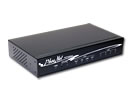'ZDNET Recommends': What exactly does it mean?
ZDNET's recommendations are based on many hours of testing, research, and comparison shopping. We gather data from the best available sources, including vendor and retailer listings as well as other relevant and independent reviews sites. And we pore over customer reviews to find out what matters to real people who already own and use the products and services we’re assessing.
When you click through from our site to a retailer and buy a product or service, we may earn affiliate commissions. This helps support our work, but does not affect what we cover or how, and it does not affect the price you pay. Neither ZDNET nor the author are compensated for these independent reviews. Indeed, we follow strict guidelines that ensure our editorial content is never influenced by advertisers.
ZDNET's editorial team writes on behalf of you, our reader. Our goal is to deliver the most accurate information and the most knowledgeable advice possible in order to help you make smarter buying decisions on tech gear and a wide array of products and services. Our editors thoroughly review and fact-check every article to ensure that our content meets the highest standards. If we have made an error or published misleading information, we will correct or clarify the article. If you see inaccuracies in our content, please report the mistake via this form.
Solwise VOIP-EL404


Solwise VOIP-EL404
pros and cons
- Affordable all cables included straightforward setup with pre-configured dial plans available
- Limited to four analogue ports SIP requires replacement firmware poor documentation
The UK importer of a range of Taiwanese VoIP products, Solwise, provided us with a pair of 4-port gateways for review. These proved to be somewhat short on extras compared to the competition, but still provided the basic long-line PBX extension support we wanted, and were relatively straightforward to deploy.
In terms of cabling, the two units look pretty similar, with a single 10/100Mbps Ethernet port for LAN attachment and four RJ-11 connectors for the telecoms equipment. In practice, however, they’re actually quite different.
At the central PBX site, the main VOIP-EL404 gateway has four FXO ports that are cabled to individual extensions using the leads provided. At the remote office end, the ports on the VOIP-EL404S are FXS compatible, with similar RJ-11 cables provided to attach analogue phones and headsets.
This pairing is the preferred configuration, with smaller 2-port and single-port desktop adapters also available for the remote end. Support for standard H.323 and SIP signalling means that other vendors' equipment and IP phones can be used at the remote office if preferred. That said, it’s worth noting that H.323 is the default and preferred protocol for long-line extension applications, and to use SIP you have to download replacement firmware. Moreover, you have to choose between H.323 and SIP – there's no option to support both on the same unit.
To get the gateways up and running, you can either attach a terminal to the local serial port or use the default IP address to telnet into the device over the LAN. A browser-based GUI also available which, although it doesn’t add very much, does make deployment somewhat easier if you don’t like command lines.
On the downside, dial plans are what drives the Solwise gateways, and if you’re new to the world of telecoms these can be a bit baffling. The documentation isn’t that helpful either, but a default dial plan is pre-configured to get you started. Solwise also offers ready-made plans that can be downloaded to cover basic requirements such as long-line extension.
We used one of these for our tests and were quickly up and running and making calls. Quality proved reasonable and we didn’t encounter any major problems. It’s worth noting, however, that incompatibilities with some PBX equipment can occur, such as the inability to hold and transfer calls remotely. For this, Solwise has developed its own add-on hardware (a timed line break generator costing £27 ex. VAT) and can also provide help and advice with installation problems.